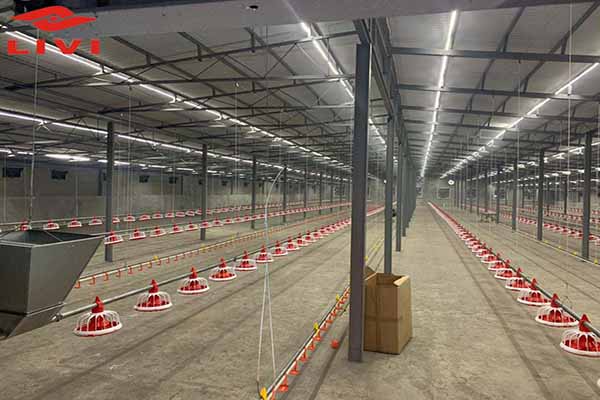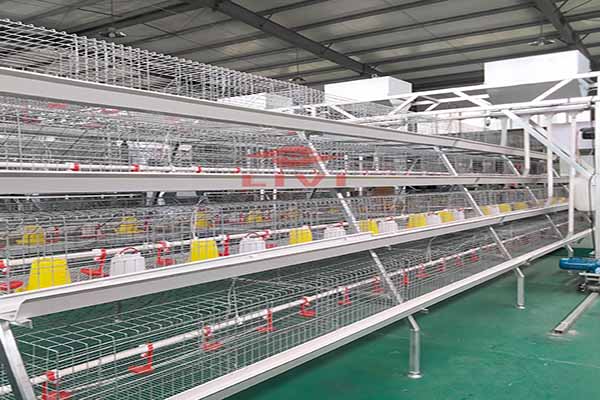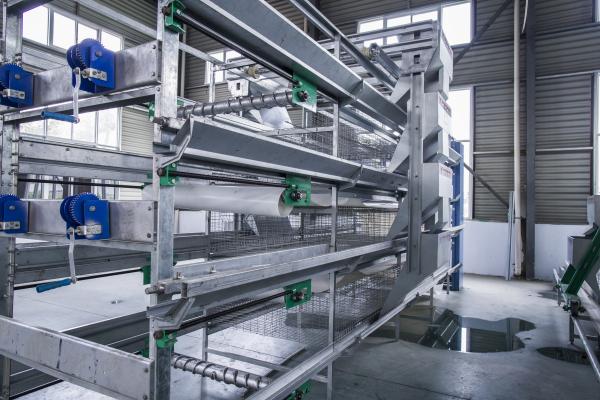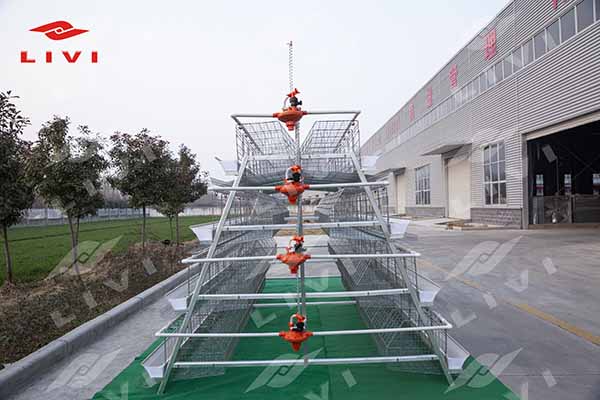Building a large scale poultry farm in Nigeria with a capacity of 200,000 egg layers is a high-return investment opportunity, especially as the country continues to experience rapid population growth, urbanization, and steadily rising egg consumption. However, achieving sustainable success at this scale requires modern infrastructure, scientific management, and—most importantly—advanced equipment such as 200000 chickens automatic layer battery cages.
This guide provides a complete blueprint for planning, designing, and operating a 200,000-bird commercial layer farm in Nigeria. It also highlights essential equipment, automation options, farm layout suggestions, and real customer cases to help investors avoid mistakes and achieve maximum profitability.
Why Nigeria Needs More Large Scale Poultry Farms
Nigeria consumes millions of eggs daily, yet domestic production is still insufficient. Investors are shifting from small farms to large scale poultry farms because:
- Daily egg demand exceeds domestic supply
- Commercial buyers prefer consistent and large-volume suppliers
- Higher profit margins with automation
- Modern layer farming cage systems in Nigeria significantly reduce operational costs
A properly designed 200,000-bird farm can produce over 180,000–190,000 eggs per day, making it a highly profitable agribusiness.
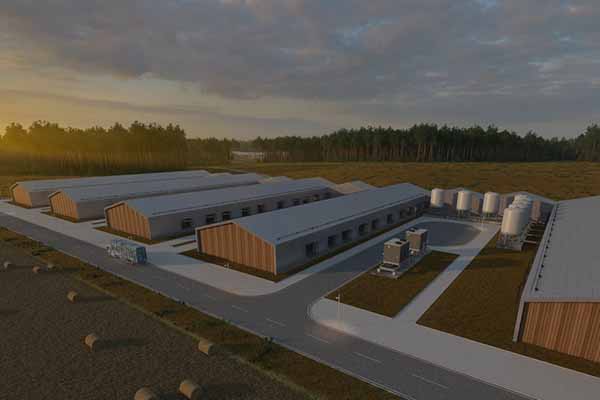
Build a Large Scale Poultry Farm in Nigeria for 200,000 Layers
Step-by-Step Planning for a 200,000-Bird Layer Farm in Nigeria
1. Land Requirement and Farm Layout Design
A modern poultry farm using automatic layer battery cage systems requires surprisingly less land compared to traditional floor rearing.
Recommended Land Size for 200,000 Layers
| Facility | Area Required |
|---|---|
| Layer houses (4–5 units) | 3–5 acres |
| Feed mill or storage | 0.5 acre |
| Waste and manure treatment area | 1 acre |
| Office, warehouse, and utilities | 0.5–1 acre |
| Total | 5–7 acres |
Key Layout Tips
- Position chicken houses in an east–west direction
- Separate clean zones (egg collection, feed storage) from dirty zones (manure area)
- Create independent access routes for workers, visitors, vehicles, and livestock
- Allow enough space for ventilation equipment and emergency access
2. Chicken House Design (Environmental Control Is Critical)
For a 20-million-egg-per-month project, chicken house design determines overall performance.
Important Construction Features
- Concrete floor with 2% drainage slope
- High-quality roofing sheets with heat insulation
- Sidewall openings for natural ventilation
- Mechanical ventilation for hot seasons
- Designated space for automatic feeding, egg collection, and manure removal systems
A 200,000-layer farm usually requires 4 or 5 long houses, each housing 40,000–50,000 layers using fully automated systems.
Comprehensive Guide to Egg Layer Cage Systems for 200,000 Chickens
Why Use 200000 Chickens Automatic Layer Battery Cages?
Battery cages are essential for professional and large-capacity Nigerian farms because they provide:
Operational Advantages
- 5–12% higher laying rate
- 10–15% lower feed wastage
- Minimal labor (only 8–10 workers for 200,000 hens)
- Better hygiene and reduced disease outbreaks
- Lower egg breakage (<0.5%)
- Convenient egg collection and manure removal
Cage System Specifications Suitable for Nigeria
- Hot-dip galvanized steel (15–20-year lifespan)
- 3–4 tiers per row
- 450–500 cm² space per bird
- Automatic drinking nipple lines
- Optional climate-control integration
These features ensure reliability in tropical environments and heavy-duty use.
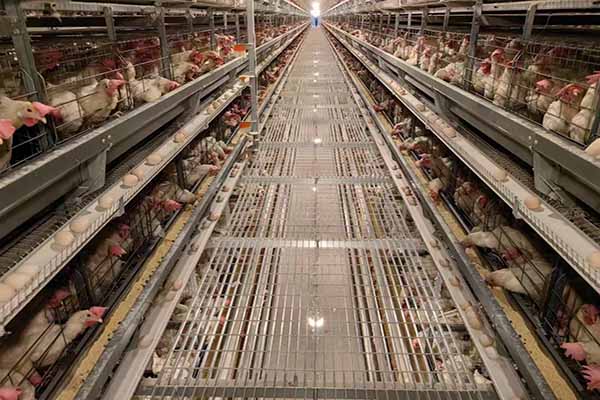
Build a Large Scale Poultry Farm in Nigeria for 200,000 Layers
How to Choose the Best Layer Farming Cage Systems in Nigeria
When selecting equipment for a large scale poultry farm in Nigeria, consider the following:
1. Cage Material and Coating
- Hot-dip galvanized (best for humid environments)
- Resist corrosion, ammonia damage, and extreme temperatures
2. Cage Design
- Strong frame structure
- Stable feed troughs
- Smooth egg-rolling angle
- Manure belt with high mechanical strength
3. Automation Level
Investors should consider full automation for 200,000 birds:
- Automatic feeding system
- Central egg collection machine
- Manure belt with scraper
- Water supply automation
- Ventilation and climate control
4. Supplier Credibility
Choose manufacturers offering:
- In-house production
- Customizable cage sizes
- Experience with large Nigerian farms
- On-site installation and after-sales service
LIVI Machinery, for example, provides automated equipment to 80+ countries and has numerous 100,000–200,000 bird projects in Nigeria.
Broiler, Chick Rearing, and Multi-Section Farm Expansion
Many large farms in Nigeria also include broiler houses or chick rearing units.
Differences: Broiler Cages vs. Floor Rearing
| Feature | Cage Rearing | Floor Rearing |
|---|---|---|
| Land Use | Less land | More land |
| Hygiene | Cleaner | Risk of wet litter |
| Growth Rate | Faster | Slower |
| Mortality | Lower | Higher |
Essential Tips for Raising Chicks
- Maintain 32–34°C in week 1
- Provide 22 hours of light daily
- Ensure clean water with medication dosage accuracy
- Provide high-protein starter feed (20–21%)
Chick rearing determines the long-term success of the 200,000-layer operation.
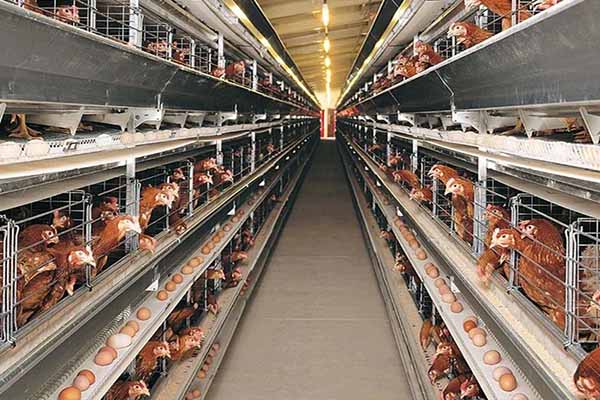
H type layer battery cages
Automated Poultry Equipment Required for a 200,000-Layer Farm
1. Automatic Feeding System
- Ensures uniform feeding
- Reduces labor
- Improves feed conversion ratio
2. Automatic Egg Collection System
- Transfers eggs to a central conveyor
- Reduces breakage
- Increases efficiency for commercial sales
3. Manure Removal System
- Keeps chicken houses dry
- Reduces ammonia
- Improves laying rate
- Prevents respiratory diseases
4. Environmental / Climate Control System
Crucial in hot Nigerian regions:
- Tunnel ventilation
- Exhaust fans
- Cooling pads
- Temperature controller
- Humidity sensors
Automatic Equipment vs. Traditional Manual System
Performance Comparison Table
| Aspect | Automatic Layer Cage System | Traditional Manual System |
|---|---|---|
| Labor Need | 1 worker per 20k birds | 8–10 workers per 20k birds |
| Egg Production | High (5–12% more) | Medium |
| Feed Efficiency | <5% wastage | 10–20% wastage |
| Hygiene | Excellent | Poor to average |
| Mortality | Low | Higher risk |
| Total Profitability | High | Medium/Low |
Automation significantly improves financial performance and reduces risks.
Real Case: 100,000–200,000 Layer Farm Project in Nigeria
LIVI Machinery recently installed a fully automated system for a Nigerian client.
Project Overview
- Capacity: 100,000 layers (expandable to 200,000)
- Cage Model: A-type hot-dip galvanized battery cage
- Automation: Feeding, egg collection, manure removal
- Workers Needed: Only 5–7
- Egg Production: 95–97% peak rate
- Daily Output: 95,000+ eggs
- Annual Savings: Over USD 30,000 in labor costs
Customer Feedback
- High stability and strong steel materials
- Easy to manage even with limited labor
- After-sales support was professional and timely
This shows why layer farming cage systems in Nigeria are increasingly shifting toward full automation.

Automatic Layer Farming Cages
Essential Tips for Managing a Large Scale Poultry Farm in Nigeria
Daily Management Checklist
- Monitor feed intake and water supply
- Track egg production charts
- Ensure manure belts run daily
- Inspect cage conditions
- Maintain climate control equipment
Biosecurity Rules
- Disinfection at farm entrance
- Restrict visitor access
- Clean feed paths
- Separate young and adult birds
- Regular vaccination schedule
FAQ – Common Questions About Large Scale Poultry Farming in Nigeria
1. How much land is required for a 200,000-layer farm?
Approximately 5–7 acres, depending on building size and layout.
2. Are automatic layer battery cages necessary for 200,000 birds?
Yes. Managing 200,000 birds manually is inefficient and prone to losses. Automation is essential.
3. How many workers are needed if the farm is automated?
Only 8–10 workers for the entire farm.
4. Are cage systems suitable for Nigerian weather?
Yes, especially hot-dip galvanized systems with proper ventilation.
5. What is the expected payback period?
Typically 12–18 months, depending on egg price and feed cost.
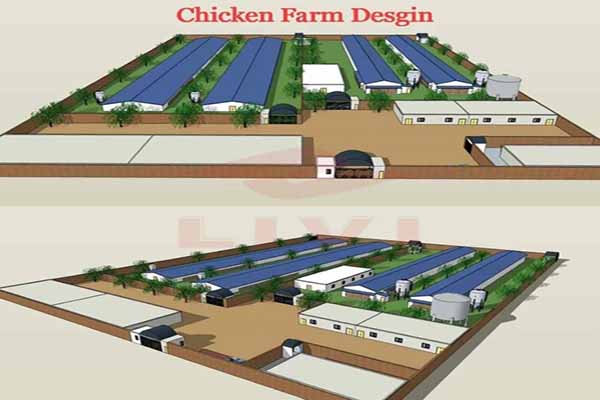
Chicken Farm Design In Nigeria
Conclusion: Build a Profitable 200,000-Layer Farm in Nigeria with Advanced Automation
Setting up a large scale poultry farm in Nigeria requires the right planning, engineering design, and—most importantly—reliable equipment.
Automated systems such as 200000 chickens automatic layer battery cages help farmers achieve:
- Higher productivity
- Lower labor cost
- Cleaner environment
- Longer equipment lifespan
- Greater overall profitability
LIVI Machinery provides:
- Factory-direct high-quality equipment
- Fully automatic layer farming cage systems in Nigeria
- Custom farm design for 20,000–500,000 birds
- Local installation support and after-sales service
Get a Free Farm Design & Quotation
Interested in starting your 200,000-layer project in Nigeria?
📧 Email: [email protected]
📱 WhatsApp: +86-17344898347
📄 Free 3D farm design, cage layout & project consultation available.






